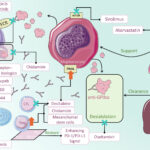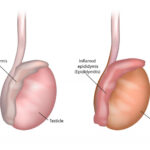Severe uncontrolled hypertension, defined as persistent systolic blood pressure ≥180 mmHg or diastolic ≥120 mmHg despite medication, presents a significant risk for cardiovascular morbidity and mortality. This condition often indicates inadequate therapeutic response, medication non-adherence, or underlying secondary causes. Without timely intervention, it may progress to hypertensive crisis with life-threatening end-organ damage.

Pathophysiology of Persistent Severe Hypertension
Hypertension results from a complex interplay of vascular resistance, cardiac output, and neurohormonal dysregulation. In severe uncontrolled cases, prolonged vasoconstriction and endothelial dysfunction exacerbate vascular stiffness and renal sodium retention. The renin-angiotensin-aldosterone system (RAAS) and sympathetic overactivation are critical contributors.
Clinical Criteria and Risk Stratification
Diagnostic Thresholds
- Severe uncontrolled hypertension: SBP ≥180 mmHg or DBP ≥120 mmHg.
- Hypertensive urgency: No acute end-organ damage.
- Hypertensive emergency: Evidence of acute damage to brain, heart, kidneys, or eyes.
Risk Factors
- Chronic kidney disease
- Obesity and metabolic syndrome
- Diabetes mellitus
- African descent
- Sedentary lifestyle
- High sodium diet and alcohol overuse
Identifying Secondary Causes of Hypertension
Endocrine and Renal Contributors
- Primary aldosteronism: Elevated aldosterone-renin ratio, hypokalemia.
- Renovascular hypertension: Renal artery stenosis, confirmed via duplex ultrasound or MRA.
- Pheochromocytoma: Paroxysmal hypertension with catecholamine surges.
- Cushing’s syndrome: Cortisol excess due to adrenal or pituitary adenomas.
- Obstructive sleep apnea: Nighttime BP surges and non-dipping patterns.
Medication-Induced Hypertension
- NSAIDs, corticosteroids, oral contraceptives, decongestants
- Illicit substances (e.g., cocaine, amphetamines)
Clinical Evaluation and Diagnostic Workup
Comprehensive Assessment
- Blood pressure monitoring: Confirm persistent elevation across visits and settings.
- Laboratory testing: CMP, lipid profile, thyroid function, plasma aldosterone/renin ratio.
- Imaging: Renal ultrasound, echocardiography, MRI/MRA for renovascular evaluation.
- 24-hour ambulatory BP monitoring: Essential to differentiate white coat hypertension.
Organ Damage Surveillance
- Cardiac: Left ventricular hypertrophy, diastolic dysfunction.
- Renal: Proteinuria, elevated serum creatinine.
- Ophthalmologic: Hypertensive retinopathy.
- Neurological: TIA, stroke symptoms, cognitive decline.
Management Principles of Severe Uncontrolled Hypertension
Lifestyle and Behavioral Modification
- DASH diet: Emphasizing fruits, vegetables, low-fat dairy, and reduced sodium intake.
- Weight reduction: BMI target <25 kg/m².
- Physical activity: Minimum 150 minutes/week of moderate aerobic activity.
- Alcohol moderation and smoking cessation.
Pharmacologic Optimization
First-Line Antihypertensives
- ACE inhibitors/ARBs: Vasodilation, RAAS inhibition.
- Calcium channel blockers: Vasodilation and heart rate modulation.
- Thiazide diuretics: Effective volume control.
Resistant Hypertension Management
- Mineralocorticoid receptor antagonists (e.g., spironolactone): Potent in aldosterone-driven cases.
- Beta-blockers: Beneficial for coexisting cardiac disease.
- Centrally acting agents (e.g., clonidine): As adjunctive therapy.
Refractory Cases
- Consider hydralazine, minoxidil, or alpha-blockers under specialist guidance.
Inpatient Management of Hypertensive Emergencies
Indications for Hospitalization
- Acute stroke, myocardial infarction, aortic dissection, acute kidney injury, or encephalopathy.
Parenteral Antihypertensives
- Nicardipine or clevidipine: For controlled BP lowering.
- Labetalol: Combined alpha-beta blockade.
- Nitroprusside: Reserved for aortic dissection or severe heart failure.
Target Reduction
- Initial goal: Reduce MAP by 20–25% within first hour.
- Gradual normalization over 24–48 hours to avoid hypoperfusion.
Monitoring and Long-Term Follow-up
Goals and Surveillance
- BP target: <130/80 mmHg for most patients.
- Regular home monitoring to assess variability and nocturnal patterns.
- Annual echocardiogram and renal function tests in high-risk populations.
Adherence Reinforcement
- Simplify dosing regimens.
- Address side effects promptly.
- Integrate pharmacists and nursing staff for patient counseling.
Future Directions and Emerging Therapies
- Device-based interventions: Renal denervation for treatment-resistant cases.
- Novel pharmacologic agents: Endothelin receptor antagonists, aldosterone synthase inhibitors.
- Genetic profiling: To tailor drug responsiveness and identify rare secondary forms.
FAQs
What defines severe uncontrolled hypertension?
Persistent BP ≥180/120 mmHg despite adherence to optimal pharmacologic therapy and lifestyle modification.
What is the difference between resistant and refractory hypertension?
Resistant hypertension requires three or more medications; refractory hypertension persists despite five or more, including a diuretic.
Can severe uncontrolled hypertension cause stroke?
Yes, particularly if unmanaged, it significantly increases the risk of ischemic and hemorrhagic stroke.
Is hospitalization always required for severe hypertension?
Only when accompanied by signs of end-organ damage; otherwise, outpatient intensification may suffice.
What if BP remains high despite multiple medications?
Evaluate for secondary causes, medication adherence, and consider adding a mineralocorticoid receptor antagonist or referral to a hypertension specialist.

